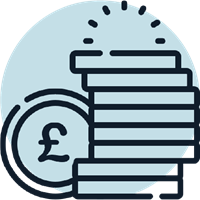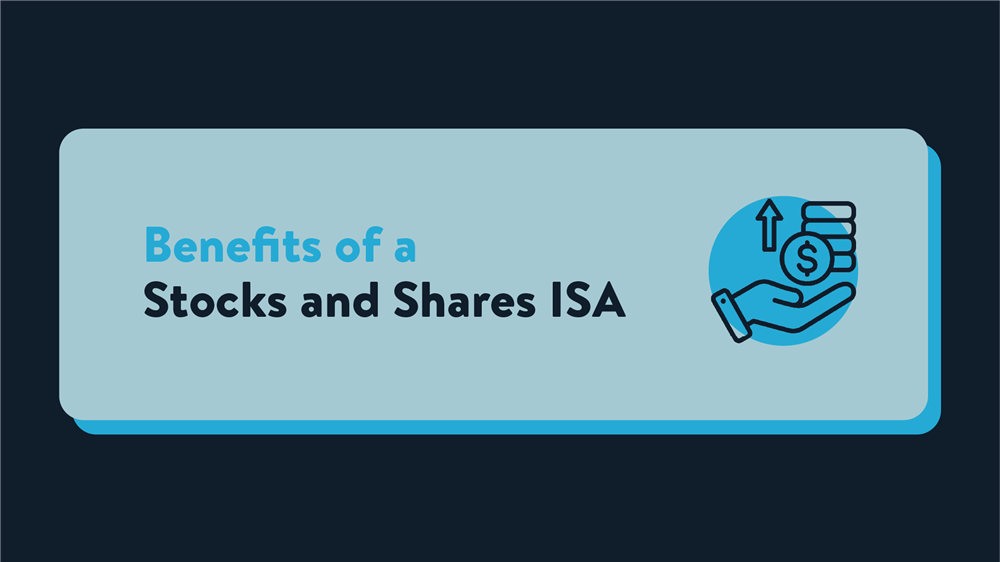Coming with many advantages, from tax-efficiency to inflation-beating potential, Stocks and Shares ISAs are a unique way to invest up to £20,000 every tax year without needing to pay tax on the money they hold. While there is risk involved (no one has a crystal ball that can accurately predict how markets will perform, and it is possible to get back less than what’s invested, after all) — people who are comfortable investing their spare cash could put this type of ISA to work for them over the long term.
Getting into investing for the first time may seem a little daunting, but now more than ever, there’s an open door to take the first step and plenty of support for any average person who’s looking to become an investor.
Sometimes called an ‘Investment ISA’, the Stocks and Shares ISA could be your gateway to investing without you necessarily needing to know much about market trends and managing mutual funds yourself. Here are the main benefits, and some important considerations, that come with a Stocks and Shares ISA:
- Tax advantages of Stocks and Shares ISAs
- The potential high returns
- Good investment options
- Simple transfer process
- Are there any drawbacks with an ISA?
Stocks and Shares ISA tax advantages
There are plenty of ways you could benefit from a Stocks and Shares ISA, but the key advantage is the tax-efficiency it offers. Investing in this type of account and taking advantage of its ISA benefits could lead you to:
- Grow your money in a tax-free way.
- Use your £20,000 tax-free ISA allowance each year in an efficient way.
- Withdraw your money free from taxes (including what you’ve paid in, and the profits earned on it).
- Have more flexibility with certain types of Stocks and Shares ISAs.
Tax-free growth
Firstly, we’re looking at how your money could grow within a Stocks and Shares ISA.
Unlike a savings account, which only tends to let your money increase through the interest rate it offers — an investment account like a Stocks and Shares ISA allows all your returns to be continually reinvested back into your portfolio.
As the value of your investments hopefully increases over time, any profits you make through dividends can be reinvested to help the fund grow even further. This compounding effect could lead to large gains over the course of your time being invested in the markets.
Tax-free ISA allowance
ISAs are super tax efficient. In fact, one of the main benefits of an ISA is the tax-free allowance you get every tax year, which is currently set at £20,000.
This means you get to invest and/or save up to £20,000 every tax year (that’s April 6th – April 5th), and any of the profits you make on top of this are tax-free when you come to withdraw your money.
Just keep in mind that the allowance should be spread across any ISA you are paying into during that tax year and you’re responsible for tracking how much you’ve deposited. So, for example, you could put £4,000 into a Lifetime ISA (and this is the annual cap of a LISA anyway), £3,000 into a Cash ISA, £3,000 into an Innovative Finance ISA, and the remaining £10,000 into a Stocks and Shares ISA.
Tax-free ISA withdrawal
Specifically, Stocks and Shares ISAs are free from capital gains tax and income tax.
No matter how much you let it build over the years. And when the time comes to sell your investments and withdraw your funds, you won’t be expected to pay tax on any money you’ve held in an ISA (as long as you didn’t go over the £20,000 allowance limit during each tax year that you contributed).
Your tax treatment will depend on your individual circumstances, and it may be subject to change in the future.
Flexible ISA withdrawals
A further note on this is that some Cash ISAs and Stocks and Shares ISAs can be ‘flexible’. While non-flexible ISAs may allow you to withdraw money that you’ve contributed during that tax year, this amount is still deducted from your remaining ISA allowance. But with a flexible ISA, you can deposit whatever you withdrew back into your ISA without this money using any more of your allowance for that tax year!
If you have the mind to have more flexibility, look for an ISA provider that offers you a ‘flexible’ ISA, like Wealthify does, for example.
Potential high return on Stocks and Shares ISAs
The benefits of Stocks and Shares ISAs don’t stop at tax advantages though; there’s also the money to think about. When investing over a long period, you may be able to reach your long-term financial goals with the help of a Stocks and Shares ISA, as long as you approach it with some key considerations, like the risk that’s involved.
As this is an investment product, the main goal is to help you grow your wealth. While there’s no guarantee that the markets will perform well, and it wouldn’t be sensible for us not to point that out, people have been investing for decades and there is a great deal of knowledge out there.
At Wealthify, for example, we have an expert Investment Team working in-house; building our Investment Plans, monitoring their performance, and managing the funds on our customers’ behalf to help keep them on track.

Investing to beat inflation
Many people choose a Stocks and Shares ISA over a traditional savings account as a means of beating inflation. This is due to traditional savings accounts, including Cash ISAs, only being able to offer you the opportunity to earn extra money via the interest rate it offers.
Variable interest rates usually rise and fall in line with the Bank of England’s base rate. So, while you may see some profit from the interest you earn compounding (when you earn interest on your interest) – in the long term, this might not be competitive enough for some people – especially when considering the effect of inflation over time.
Investing in something like a Stocks and Shares ISA could allow you to grow your wealth quicker than the rate of inflation, though. Especially as investing is considered a long-term investment tool (aka, something you do for a minimum of 5 to 10 years).
However, there are no guarantees that the markets will perform as you hope, and you could end up getting back less than what you invest. Again, this is why people invest for the longer term — to try to ride out the ups and downs of the stock markets.
Good investment options
You can invest in multiple assets – not just shares in companies – but also things like property, government bonds (called ‘gilts’ in the UK), exchange-traded funds, or mutual funds.
Plus, there’s a wide range of styles and approaches to investing, and with a Stocks and Shares ISA, you’re open to using providers that offer one that suits you.
If you’ve been conducting your research and are comfortable with doing it yourself, you can look at providers that allow you to invest in a DIY fashion.
Or, if you’d prefer to be more hands-off and leave it to the professionals to manage your investments for you, a Stocks and Shares ISA with a robo-investor, or team that can manage it on your behalf, is available. (This is what Wealthify offers with our Investment Plans).
If you are looking for a Stocks and Shares ISA that allows you more flexibility, has the option to explore ethical investing (more on that below), and can cater to your individual approach to investing — find out more about how Wealthify could help you get started with investing.
Please remember, with investing your capital is at risk, and you could get back less than what you put in.
Ethical investment options
 It’s even possible to help your money grow and do your bit for the future by choosing to invest ethically. Your money will be invested in companies that are committed to having a positive impact on the environment and society.
It’s even possible to help your money grow and do your bit for the future by choosing to invest ethically. Your money will be invested in companies that are committed to having a positive impact on the environment and society.
If your values about investing in certain industries have held you back before now, then opting for a provider that lets your money go only towards ethically focused funds could be a solution to this.
Simple ISA transfer process
If you’re disappointed with your returns, think your fees are too high, or you just want to get the best ISA rates in the UK, transferring your Stocks and Shares ISA to a new provider could help.
If you have two or three older Stocks and Shares ISAs with different providers, transferring them all to one place will mean you only pay one set of fees and the money held in the fund could be compounded more efficiently.
It is best to double-check the fees and projections before you do this, but if it makes better financial sense, this could be worth considering. If you wanted to move money from an ISA you were paying into during a previous tax year to a new provider, you can transfer as much over as you’d like, and it won’t count towards your current tax year's ISA allowance. However, there are different rules for the current tax year, and withdrawing it manually could negatively impact your remaining ISA allowance until April 5th.
Whatever you do, use the new provider’s official ISA transfer form to retain your current tax year's ISA allowance benefits. Please visit our ISA transfer page for more information.
Are there any drawbacks with an ISA account?
Naturally, there are considerations to know about before opening a Stocks and Shares ISA and starting to invest. Such as:
- You can only invest up to £20,000 in each tax year;
- That £20,000 must be spread across any ISAs you have and are contributing to in the current tax year (meaning you don’t get £20,000 per ISA;
- You are personally responsible for not going over that ISA allowance amount, not the ISA provider(s) you’re using.
- You can’t open a joint ISA account with someone else (the ‘i’ stands for individual, after all!).
And specifically with investing:
- You may not get back as much as you put in, as there’s no way to predict exactly how the markets will perform.
- Investing fees and charges vary; it’s worth comparing provider’s fees to work out how these will impact your overall funds.
To find out more about Stocks and Shares ISAs, read our complete guide here.
Please remember the value of your investments can go down as well as up, and you could get back less than invested.
Your tax treatment will depend on your individual circumstances, and it may be subject to change in the future.
Wealthify does not provide financial advice. Please seek financial advice if you are unsure about investing.
References:
[2]: https://www.finder.com/uk/share-trading/share-trading-research



